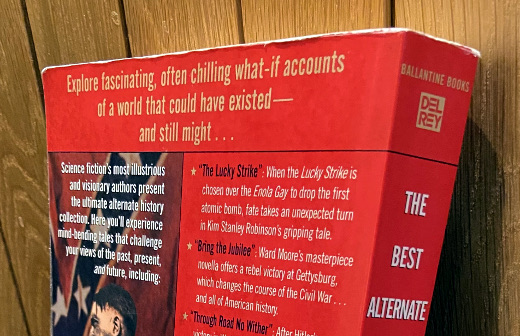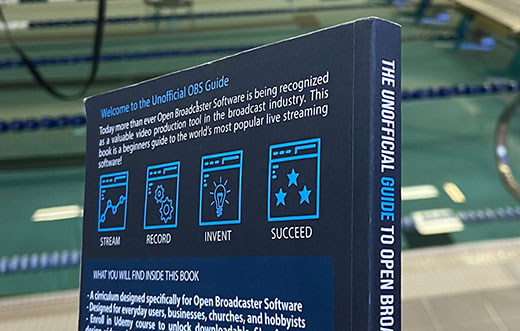Tales From Plymouth For Thanksgiving

For those readers in the US or those who observe the US holiday elsewhere, Happy Thanksgiving! Whether you are reading this as you start your day or towards the end of it as you complain about eating too much (and hopefully not during the game where my Patriots are taking on the Vikings, but I digress), I would like to share some unique tales related to the holiday.
Your humble author has actually spent a lot of time in Plymouth, Massachusetts over his lifetime. As a Bay State resident I of course visited the town for its historic role where the Pilgrims landed. Additionally I worked in the town for over a year and a half on a great consulting project early in my career (which I too should write about someday, another digression) and mixed with townspeople and tourists often. Allow me to share a couple of stories from that time.
Landmarks of Sorts
When I worked in Plymouth it was over an hour from my home, so I often shopped local businesses for goods and meals. There was a great sub shop in downtown Plymouth I would often go to, which just happened to be close to Plymouth Rock. Some lunchtime visits there were easier than others, depending on the number of tourists huddled by the gazebo that sheltered the infamous boulder.
One day after getting my lunch I observed there were only a few tourists by the Rock. Where every bone in my body was telling me not to go to it, I did anyway. I had visited Plymouth as a young adult before (as I will talk about later) and had seen it, but decided to give it another look. For those who have not had the pleasure to see it in person, it’s a large rock with “1620” chiseled into it, laying on the shore’s edge. The gazebo is a granite-pillared structure where you are standing a level above it looking down upon where supposedly Pilgrims took their first steps onto the New World. So that it is not disturbed by people, a gate is on the waterside of the gazebo, though water can freely splash on it.
So I stood there, with sub in hand, leering upon this tourist destination. It was somewhat peaceful looking down at it and Plymouth Harbor behind it. But the longer I was there, the hungrier I got and decided to have my lunch right there as I leaned on the railing under the gazebo. Where I kept the sub wrapped for the most part, likely crumbs from it landed on the centuries old symbol.
History Takes a Break
The Plimoth Patuxet Museums (known as Plimoth Plantation up until 2020) has on its grounds a creation of the original compound the Pilgrims built upon their arrival among other features. It is considered a living history museum, where in addition to the buildings there are actors who are dressed as people did in the 1600’s not to mention speaking in the English dialect of the time. Though someone who is not a fan of such places due to growing up in New England and going to such museums more than a person likely should, I have gone twice, the first time with my immediate family back in my young adult days.
As one tours the above-pictured village, you can see what is believed to be what it looked like back in the day as well as interact with people playing the roles of those whose names are familiar from history lessons, including William Bradford and Myles Standish. Though the exact location of the original compound and its specifics are largely unknown, it gives a good idea of what life was like at that time.
On the museum grounds is a beautiful visitors center that features a movie theatre, gift shop and a dining hall where you can have for lunch a Thanksgiving dinner (the hall also makes a great place to have a wedding reception as friends did when they got married at a park on the property several years ago, again I digress). Following a few hours of immersion in the history of the Pilgrims, we were hungry and decided to have said Thanksgiving meal and got in line at the cafeteria.
After a while standing in line I turned around and low and behold it was Myles Standish. Well, it was the actor who played him that we saw “on the set” a short while ago. He was still in his woolen period uniform, though he had unbuttoned the top and was wearing a very 20th century t-shirt under it. Tapping into my inner-tourist I smiled and said to him and my family, “look, it’s Myles Standish in line with us!” At this he scowled and said, “not now, I am on my lunch break.”
May you make your own Thanksgiving memories, in Plymouth or wherever you are.
This is from The Hot Iron, a journal on business and technology by Mike Maddaloni.
Did you enjoy this? Subscribe to The Hot Iron by RSS/XML feed or Read by Email
Diversions • (0) Comments • PermalinkDefending Elections With Technology
As I write this post, it is almost 2 weeks after the 2022 US midterm elections. There are still races that have not been certified, ballot recounts in process and along with them a multitude of news headlines and speculation as to why all of this is happening. Outside of the news outlets and municipal halls, rumors and doubts circulate. Of course there are more races that have been tabulated and certified with candidates declaring victory and their opponents conceding, yet those contests are not the “breaking news” as those still outstanding.
But does that have to be the case? Can ballots be counted and confirmed with confidence and within a reasonable amount of time to not cast a shadow on the overall process? The answer is yes, as this is already being done and has been done for years thanks to a sophisticated technology solution that isn’t getting headlines like it should.
Making Voter Intent Clear
Several years ago I had the good fortune of working with Larry Moore at a firm he was leading. At that point he was already a tech pioneer and visionary. His door was always open when I had a question or challenge and he was able to help me see things from aspects I hadn’t even considered. Later we later reconnected and I learned about technology he envisioned and with a great team brought to life to help solve the issue of voter intent and integrity. The company he founded was Clear Ballot and the technology involves scanning paper ballots and using advanced software to count both votes and voter intent. Think of how a ballot looks and if someone didn’t fill in an oval correctly or maybe circled the name instead of filling in the pesky oval, and this is what the software helps determine, with human reviewers, to properly audit an election.
Even as I re-read what I just wrote I know I am not giving this proper justice. Fortunately Larry recently produced a video where he describes the problem most are aware of and the solution most are not. The video “See the Vote - Fight Disinformation” is embedded below or click here to watch the video on this voting technology.
Deconstructing Defending Elections
It is beyond cliché to say how technology has positively impacted out lives. However as a result of issues with voting and certifying elections over the years, the prevailing thought of paper ballots and hand-counting, with all of their own challenges, has been the direction to insure elections are fair and accurate. I hope this video shed light on how technology has, can and will be a positive force in election integrity.
This is from The Hot Iron, a journal on business and technology by Mike Maddaloni.
Did you enjoy this? Subscribe to The Hot Iron by RSS/XML feed or Read by Email
Strategize • Technology • Thrive • (0) Comments • PermalinkMy Takeaways From The Best Alternative History Stories Of The 20th Century

What if? What if the atomic bomb was never dropped on Nagasaki? What if McGovern beat Nixon in the 1972 US Presidential election? What if Hitler was victorious in World War II?
It’s hard to imagine how life as we know it would be if history as we know it was different. Or is it? I recently found this topic little easier to comprehend when a colleague gave me a copy of The Best Alternative History Stories Of The 20th Century.
At over 400 pages, this book has 14 individual stories that fall into the genre called “alternative history.” For those not familiar with this genre, the stories are based on an event or period of time in history that is reimagined with a different outcome. The result is a collection of tales of what could have been different, making you think even more as you turn the pages of this assortment of fiction. Not only was I thinking about alternative outcomes as I read this book, a few takeaways leapt from its pages as well.
I didn’t know this genre existed before this book – Where I have repeated here on the posts of this humble blog that I am no prolific reader, I certainly backed up that statement when it came to alternative history. I had never heard of the genre before I read the book. That helped me get to the several hundred pages as I was intrigued at what would be the “best” of stories.
No two stories were the same – As each tale of an alternative outcome were written by different authors, the stories were as unique as the individuals. Some were short, some were long. Some were painstakingly detailed, others glossed over minutiae in exchange for plot and character development. Some were about a specific event itself and others were related to activities as the result of an alternative history. In the end I mostly appreciated the variety of styles as much as their topics.
I never finished 2 of the stories – Two of the stories were very hard to follow and I decided after several pages to skip them. One was about a period of time I didn’t quite understand when it was and the story was difficult to follow. Another had a very complex style that made it hard for me to read. Where I have read every page of every book I’ve written about, this is the first time I did a fast-forward on a few.
The Best Alternative History Stories Of The 20th Century was unique in how it made me think at different levels, and is a book I highly recommend. When I make more room in my bookshelf I will certainly consider adding alternative history stories to it. As I pass along all books I read, this is going to one of my favorite cousins, both for her enjoyment and to help atone for missing her recent birthday.
This is from The Hot Iron, a journal on business and technology by Mike Maddaloni.
Did you enjoy this? Subscribe to The Hot Iron by RSS/XML feed or Read by Email
Book Take-Aways • (0) Comments • PermalinkDomain Name Horror Stories For Halloween

There's no better preparation for Halloween like good horror stories. A few years ago I shared some spooky stories of Web site content horrors. So forget getting trapped in a car and hearing scratching sounds on the roof, as these stories of misadventures with domain names will certainly curdle your blood! Names have been changed to protect the innocent... and frightened.
Gone Killin'
Preparations were going well for the launch of the new Web site. In our weekly meeting we agreed we could confidently schedule a launch date and all marked our calendars. When launching a new Web site with different hosting than the current site, changes are required to the domain name settings (DNS) of the domain name. In the case of this client, the domain name was managed by their current hosting vendor. Knowing this at the beginning of the project, I tried to convince the client to transfer the domain name to their own domain registrar account. Sadly, my advice was not heeded, and that decision almost came back to haunt them.
With the date in hand I contacted their current vendor, who was aware of the project, told him the date and asked for confirmation he could make the necessary DNS changes on the launch date. He acknowledged, though I left the call with a queasy feeling, one I felt after most conversations with their vendor. It was a combination of what he said and how he said it - always very casual and somewhat dismissive. "Yea, I can do that" with someone whom I've yet to have a track record with doesn't give me a lot of confidence, but it's the best I can work with. I decided to send multiple reminders leading to the launch, all of which he responded to in the affirmative.
On the launch day I contacted their vendor with the DNS change information – I sent an email and followed up with a call that went right into voicemail. The email had a read receipt request I never got. I gave it about an hour, and then called again, and got the same voicemail. In the interim, several times I checked if he just made the DNS changes and failed to reply to me, which wasn't the case either. I then called the client to tell them the situation. They were prepared for this as I had shared with them my gut feel on their soon-to-be ex-vendor. They then gave me his mobile number – he was a small operation - and I called, again with no answer. This was followed by a text message and another call, which was answered.
In short, he forgot he had to do this and since it was a nice day out he decided to go fishing. Where he called from had poor service plus he did not have a computer and as he was out on a lake. But he said he would be able to take care of it later in the day, the time depending on how well fishing was going. After I hung up I decided I still needed my phone and throwing it across the room was not prudent. I called the client back and told them my news, to which they reluctantly accepted as we both knew we were at his mercy.
Later in the evening he made the changes though he did not call to tell me he did it. In subsequent days, after the shiny new Web site was up and running, I later facilitated the client transferring their domain name away from this scary vendor.
Frankendomain
As I monitor domain names and Web sites for my clients, I was alerted a Web site went down, and upon further review I found the domain name had expired. Unfortunately this is a common occurrence, but one that can be quickly remedied by logging into your domain registrar account and renewing the domain name. That is, if you can log into it.
Right away I emailed and called the client and advised them of this, and offered my help. Later I heard back from them that they were not able to login, as their domain registrar account was challenging them with two-factor authentication and it was trying to text the code to the previous head of the firm who was let go under less than acrimonious circumstances. After that leader had left, nobody bothered to change the contact information on the domain registrar account, and thus their peril.
The quickest way to resolve this issue was to get a hold of the previous leader and ask them to send an authorization code when texted to them. The chairperson of the firm tried this to no response (maybe as they were the one who let go that person had something to do with it?). What to do next?
Following that failed Plan A, Plan B was to contact the domain registrar, explain the situation and submit payment over the phone so the Web site would come back to life, then try to retrieve the login account later. For some strange reason I was never able to understand, they wouldn't take payment over the phone - we weren't trying to take over the domain name, just reactivate it. They said the only real Plan B was to reclaim the account.
Reclaiming a domain name account is something I personally have been through too many times myself, as it is a straightforward but long, arduous process of submitting paperwork proving who you are - individually and as an organization. This typically requires items like a copy of your driver’s license, IRS EIN letter which lists your tax ID number, articles of incorporation, state or federal licensing information, et. al. With this proof, you should be able to get back the account within a few weeks. Yes, weeks - which meant the site would be down that long.
But there was a wrinkle, a huge, ginormous wrinkle - the firm did not have a copy of its IRS EIN letter. They knew their EIN number, but didn't have "proof" of it in their vital records file (well, I never asked them if they had such a file, as I did when I had my own business, but I digress). They then contacted the IRS in order to get one. Now here's where the ginormous part comes in - this was June of 2020, the country was in the midst of lockdowns, the IRS was working remotely and not issuing anything in paper form or digitally for that matter. In short, the firm was not able to prove who they were!
After learning this, I contacted the domain registrar myself, explaining the situation and asking if we can simply make a payment. They refused. What? I was pissed. I won't say what I said to them, but it wasn't civil. I slammed the phone down and vowed bloody revenge. But we still had a domain name to deal with, and it was getting close to the 30 days after it expired. Why was this important? At the 30-day mark the domain name would be listed for auction by the registrar as an abandoned domain name, and 15 days later it would go up for auction.
Thus Plan C was crafted to "win" the domain name auction and get the domain name back. Yes, it meant a month and a half of the Web site being down. Sure, we could have gotten a new domain name and started over, but then search history and SEO gained over the years would be lost. Plus I have never, EVER lost a domain name and was not about to now, lockdowns be damned! I explained all of this to the chairperson of the firm, who agreed with the approach and authorized the expense.
Daily I monitored the domain name until the auction took place, and let the games begin. I previously registered as a bidder with the registrar, and then entered the auction with a low entry bid. I forget the set duration of the auction but it was maybe 30 minutes to an hour. As the domain name was a longer, unique name, I did not expect many if any additional bids. Interestingly with about 10 minutes left in the auction a few additional bids came in, which I quickly outbid. Some registrars have been accused of having staff bid in active auctions to drive up prices, but I don’t know if this was the case here. In the end I "won" the auction with a high bid of around $30, but with all associated fees it went just over $100. Within a day I had the domain name in my personal account at that registrar and the Web site was once again alive.
After the 60-day transfer hold following the auction I transferred the domain name back to the client, but in a new registrar account with a different registrar with their new and accurate contact information. Where the registrar that refused to help gained from the auction process, they lost a customer for life.
Deconstructing Domain Name Horror Stories
The tales told here were indeed scary, but in both cases certainly avoidable. You should always have your domain names in an account you control. Setting a couple of calendar alerts and verifying the login and contact information on a domain registrar account semi-annually is the largest hurdle. Logging into the account and setting a domain name on auto-renew and verifying the credit or debit card will not expire before the auto-renew date will ensure the annual renewal happens. You can even extend the registration out a decade so you don't have to pay for a while. All of these steps will ensure you have no domain name skeletons in your closet.
This is from The Hot Iron, a journal on business and technology by Mike Maddaloni.
Did you enjoy this? Subscribe to The Hot Iron by RSS/XML feed or Read by Email
Domain Names • Strategize • Technology • (0) Comments • PermalinkMy Takeaways From The Unofficial Guide to Open Broadcaster Software

As I have talked about before at great length, when I entered the world of livestreaming I literally dove head first into the pool and checked for water afterwards. Pun intended, as I have been livestreaming swim meets going on 2 years now. Within a short amount of time I was able to learn the basics and do a good job with that knowledge.
Through all of this I knew there was more to it, especially as there’s a number of resources available online about livestreaming. Where searching on topics has yielded me decent results, I also wanted to put some structure around my learning journey.
My quest led me to the book The Unofficial Guide to Open Broadcaster Software by Paul Richards. It is based on a class his firm Streamgeeks offers on the Udemy learning platform. As I have watched several of his videos and this was one of few printed books available on the OBS software we use to manage the livestream, I decided to buy a copy of it. Note you can request a PDF download of the book for free by filling out a form.
This book did not disappoint – it provided in a narrative style a top-down approach to livestreaming, chock full of examples and diagrams to provide a complete package of learning. As I went through the pages, I had the following takeaways from this book.
Provided the structure I needed – As a GenXer, my historical approach to learning is far from digital-first. Where I have taken many online courses that had no printed or tangible materials, it was refreshing to be able to have this printed book, carry it with me and read from cover-to-cover. The organization was just right and it gave me structure I would never have gotten from a YouTube playlist.
Validated a lot of what we are doing – With the approach I took with livestreaming, coming at it from all angles, I wondered how much I wasn’t doing that I should be. After reading this book, I did find a few things I wished I knew up-front. However it validated much of what we had done, and that gave me a great feeling. Granted we got compliments from many people on the end-product, but it’s also good to know we have used best practices to that end.
Learned plenty of tips – As I read the book, I took a lot of notes. Many notes were on things we haven’t done, and others were on what we were doing and options to consider. The list is something I am now working from to enhance our livestreaming process.
I highly recommend The Unofficial Guide to Open Broadcaster Software to anyone who is thinking about livestreaming or is already doing it, like myself. Certainly there are technical aspects to the book that may be beyond someone’s comfort zone, but if you’re looking to getting into livestreaming, they are important to learn and explore. There is a second edition to the book that I have also read, OBS Super User Guidebook: The Best Open Broadcaster Software Features & Plugins, that builds on the first edition and a writeup of takeaways from that would be similar to this one. This book too is available in print format or as a free PDF download. I plan on writing a follow-up to my original blog post on what I learned of livestreaming swim meets and will include these tips in that post.
As I share all books I read, I passed this copy along to one of my fellow livestreaming Swim Dads, someone who has been a great partner with me on this broadcasting journey, so he can share in the information and motivation to improve our livestreams.
This is from The Hot Iron, a journal on business and technology by Mike Maddaloni.
Did you enjoy this? Subscribe to The Hot Iron by RSS/XML feed or Read by Email
Book Take-Aways • (0) Comments • Permalink

